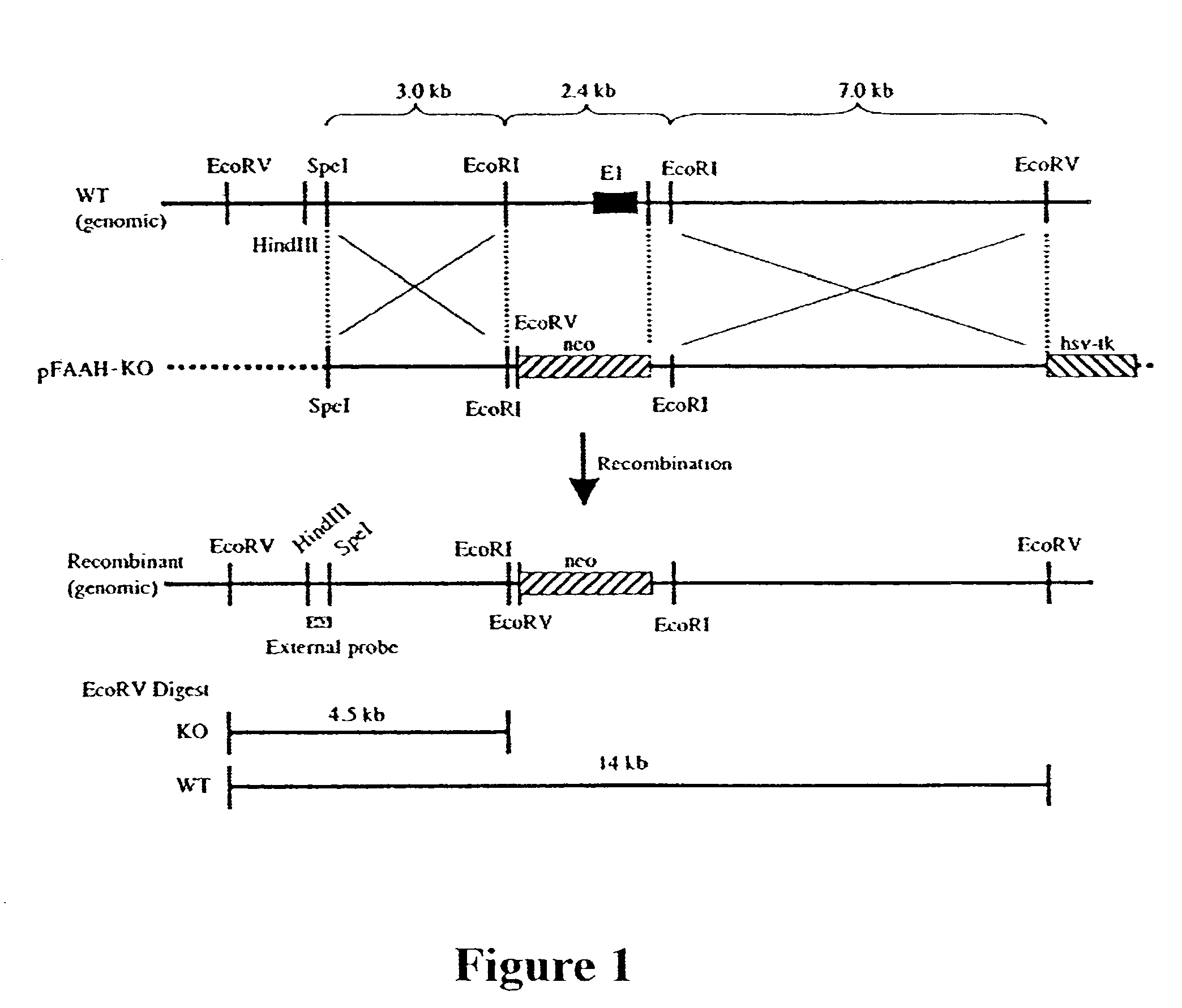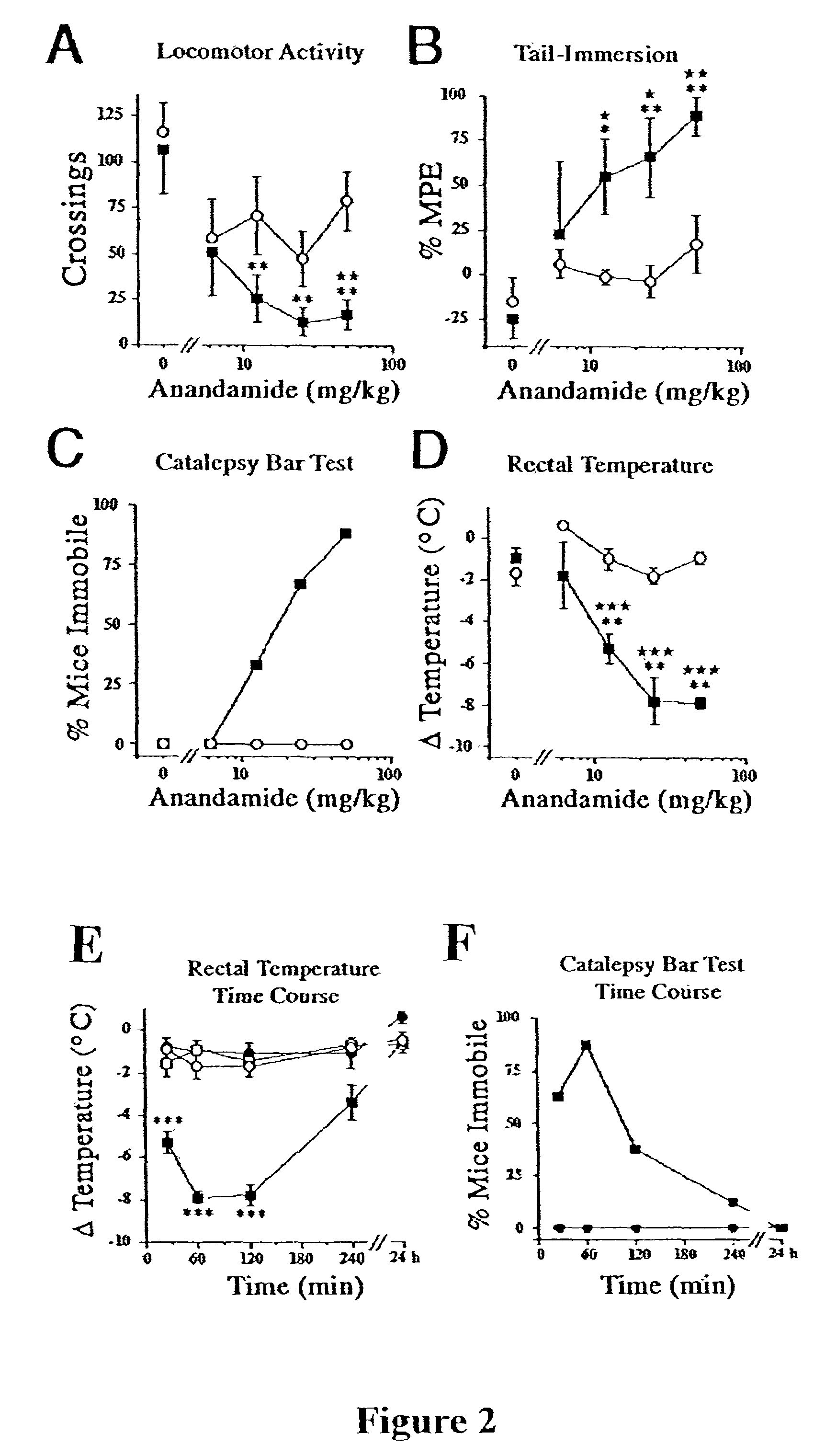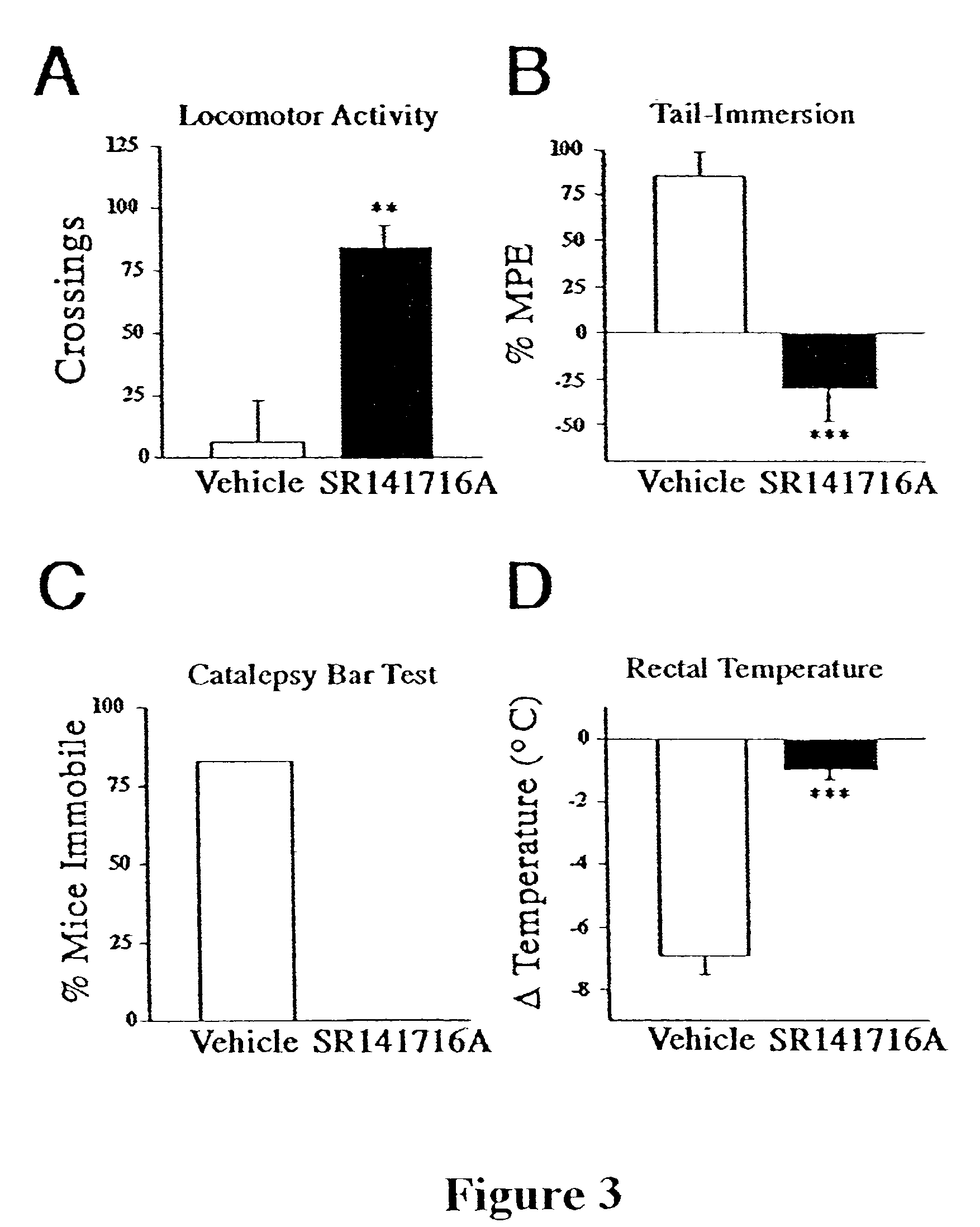Mouse model for fatty acid amide-related neurobehaviors
a fatty acid amide and neurobehavioral technology, applied in the field of animal model systems, can solve the problem of the mouse not being able to produce detectable levels of faah, and achieve the effect of inhibiting faah activity
- Summary
- Abstract
- Description
- Claims
- Application Information
AI Technical Summary
Benefits of technology
Problems solved by technology
Method used
Image
Examples
example 1
Generation of FAAH Knockout Mice
[0056]This example provides a method for generating fatty acid amide hydrolase (FAAH) knockout mouse using homologous recombination to disrupt the endogenous FAAH gene.
[0057]The FAAH gene was isolated from a 129SvJ genomic library and a 2.5 kb region encompassing the first exon was mapped and sequenced (see FIG. 1). A targeting vector, pFAAH-KO was constructed by inserting the PGK-Neo cassette between the Eco RI and Eco RV sites located 2.3 kb apart in the FAAH gene, replacing the first FAAH exon (encoding amino acids 1 to 65) and approximately 2 kb of upstream sequence (see FIG. 1).
[0058]Homologous recombination in 129SvJ embryonic stem cell clones was identified by Southern blot analysis using the probe shown in FIG. 1. For Southern blot analysis, genomic DNA was isolated from the transfected stem cell clones, digested with EcoRV, then separated by electrophoresis, transferred to nylon filters, and hybridized with the labeled probe. Two clones showi...
example 2
Biochemical Characterization of FAAH Knockout Mice
[0060]This example provides biochemical assays useful for characterizing the FAAH knockout mice.
[0061]Brain and liver were isolated from homozygous wild type (FAAH+ / +), heterozygous (FAAH+ / −) and homozygous knockout (FAAH− / −) mice and examined by western blot analysis using polyclonal anti-FAAH antibodies (see Patricelli et al., Biochemistry 37:15177-15187, 1998). No FAAH protein was detectable in the brain or liver of the knockout mice.
[0062]The mice also were examined for FAAH enzymatic activity. FAAH activity assays for oleamide and anandamide were measured by following the conversion of 14C-labeled substrates using a thin layer chromatography assay essentially as described by Patricelli et al. (Biochemistry 38:9804-9812, 1999), except that enzyme assays were conducted at pH 7.2. Brain and liver from FAAH− / − mice exhibited greatly reduced FAAH catalytic activity (Table 1). Brain extracts from FAAH− / − mice hydrolyzed anandamide and...
example 3
Neurobehavioral Examination of FAAH Knockout Mice
[0063]This example provides neurobehavioral assays that measure spontaneous activity, thermal pain sensation, catalepsy, and rectal temperature, and demonstrates that FAAH regulates anandamide activity in vivo.
[0064]Experiments were performed using a combination of male and female mice (no significant sex differences were observed for either genotype). All drugs were administered intraperitoneal (ip) in a mixture of 1 part ethanol: 1 part EMULPHOR alcohol (GAF Corp.; New York N.Y.): 18 parts saline (10 μl / g body weight), except naloxone was administered ip in saline.
[0065]Locomotor activity was assessed by placing each mouse in a clear plexiglass cage (18×10×8.5 inches; l.w.h) that was marked in 7 cm square grids on the floor of the cage. The number of grids that were traversed by the hind paws was counted from 15 to 20 min post-injection. Nociception was assessed using the tail immersion assay, wherein each mouse was hand-held with a...
PUM
| Property | Measurement | Unit |
|---|---|---|
| diameter | aaaaa | aaaaa |
| diameter | aaaaa | aaaaa |
| pH | aaaaa | aaaaa |
Abstract
Description
Claims
Application Information
 Login to View More
Login to View More - R&D
- Intellectual Property
- Life Sciences
- Materials
- Tech Scout
- Unparalleled Data Quality
- Higher Quality Content
- 60% Fewer Hallucinations
Browse by: Latest US Patents, China's latest patents, Technical Efficacy Thesaurus, Application Domain, Technology Topic, Popular Technical Reports.
© 2025 PatSnap. All rights reserved.Legal|Privacy policy|Modern Slavery Act Transparency Statement|Sitemap|About US| Contact US: help@patsnap.com



